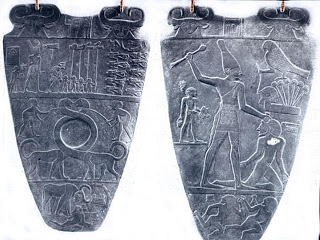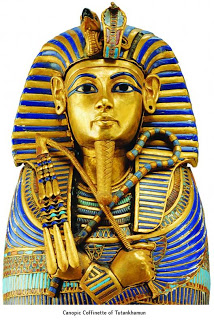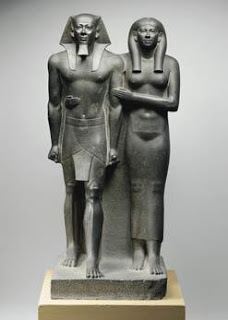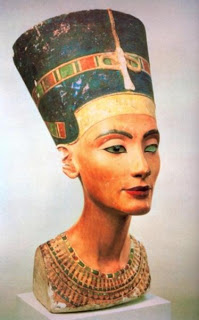| Online: | |
| Visits: | |
| Stories: |
Examples of ancient Egyptian art
Wednesday, October 21, 2015 10:34
% of readers think this story is Fact. Add your two cents.
The Narmer Palette
- a shield-shaped slab of gray stone 64 centimeters long, is in the shape of a cosmetic palette. It would have been used for mixing make-up for the royal family.
- What makes this particular palette of importance is that is larger than most palettes, and it is elaborately carved on both sides with images and words.
- What makes this particular palette of importance is that is larger than most palettes, and it is elaborately carved on both sides with images and words.
- The Narmer Palette is one of the first examples of Egyptian hieroglyphic writing. Pharaoh Narmer is shown on two sides of the palette wearing 2 different crowns. This may represent the historical event of the unification of Upper and Lower Egypt by the pharaoh.
 |
| Seated Scribe |
Seated Scribe
– This painted limestone sculpture represents a man in a seated position, presumably a scribe. In ancient Egypt scribes were the most educated people, having to study law, mathematics, religion as well as reading and writing.
- He is holding a half rolled papyrus. During the ancient Egyptian period, writing was recorded on papyrus which is a type of paper made from a dried papyrus plant.
-He is seen sitting low on the ground because during this time it was frowned upon for anyone in the country to sit higher than the pharaoh.
- He is holding a half rolled papyrus. During the ancient Egyptian period, writing was recorded on papyrus which is a type of paper made from a dried papyrus plant.
-He is seen sitting low on the ground because during this time it was frowned upon for anyone in the country to sit higher than the pharaoh.
Nebamun hunting birds
- Here we see Pharaoh Nebamun hunting wild animals. In the picture we also see his wife and daughter watching him provide for the family.
-This picture is a good example of how they painting style in Egypt begins to change. Instead of everything being stiff and flat, it begins to look more natural. The birds seem more free and open and the fish have more shading and volume.
-This picture is a good example of how they painting style in Egypt begins to change. Instead of everything being stiff and flat, it begins to look more natural. The birds seem more free and open and the fish have more shading and volume.
Coffin of Tutankhamon
- Tutankhamon died at the very young age of 18. His coffin was much more elaborate than most pharaohs’ before him. It was found in 1922 by a British archaeologist. He discovered that inside 2 more plain looking coffins was a solid gold sarcophagus decorated with colored glass and semi precious stones.
- In his hands he hold the crook and flail. The flail symbolizes the Pharaoh's role as provider of food for his people and the crook symbolizes his role as the shepherd of his people.
- Protecting his head are two goddesses, Wadjet the cobra and Nekbet the vulture. The wings and claws of these animals wrap around him as a sign for infinity.
Menkaure and Queen Khamerernebty
- This is a good example of sculpture from the Old Kingdom Style in Egypt.
- The sculptor would have started with a solid stone square and then chiseled and sanded it to get a smooth texture.
- Even in a sculpture, no on got to be bigger or higher than the pharaoh. The Queen here is shorter and is standing further back.
- The sculptor would have started with a solid stone square and then chiseled and sanded it to get a smooth texture.
- Even in a sculpture, no on got to be bigger or higher than the pharaoh. The Queen here is shorter and is standing further back.
Bust of Nefertiti
- This is a good example of sculpture from the New Kingdom Style in Egypt. Notice how the features look more real than the old kingdom statues.
- This piece is made from limestone and was then painted to look naturalistic. Blue is a signature color for Nefertiti. During the ancient periods, blue paint was very expensive and hard to make. This meant that only royal families could afford to use it.
- This piece is made from limestone and was then painted to look naturalistic. Blue is a signature color for Nefertiti. During the ancient periods, blue paint was very expensive and hard to make. This meant that only royal families could afford to use it.
Source: http://egy-king.blogspot.com/2015/10/examples-of-ancient-egyptian-art.html









